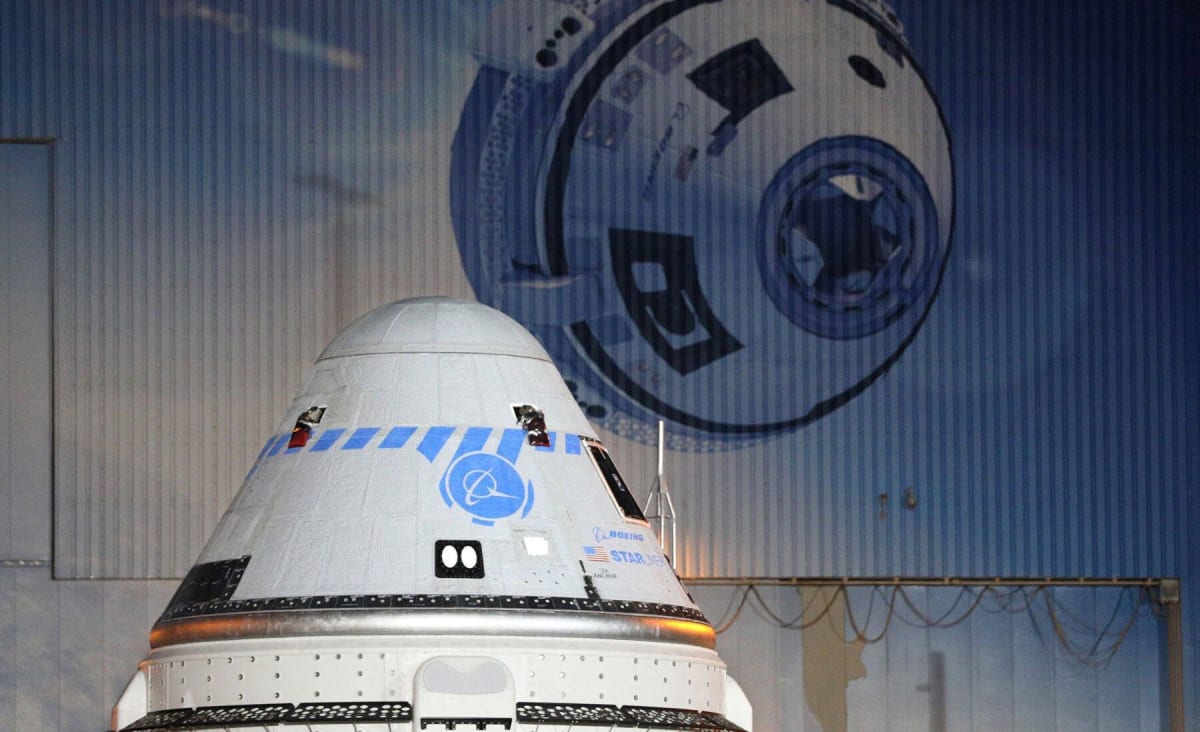
www.yahoo.com
NASA Is Launching the Next Test Flight to Space — Here's How to Watch the Boeing Starliner
The OFT-2 mission will send the uncrewed spacecraft to the International Space Station.
Science & Tech
GREGG NEWTON/Getty Images A close-up view of the CST-100 Starliner spacecraft while rolling out from Boeings Commercial Cargo and Processing Facility in the pre-dawn hours at the Kennedy Space Center in Cape Canaveral, Florida on July 17, 2021, ahead of its scheduled launch on July 30.
July has already been a busy month in spaceflight, but it's not over yet. Following on the heels of the successful test flights by Virgin Galactic and Blue Origin that carried their billionaire founders, Richard Branson and Jeff Bezos, respectively, to space, NASA has cleared Boeing for launch next week.
On Friday, Boeing will launch its new Starliner spacecraft on an uncrewed test flight to the International Space Station (ISS). Here's everything you need to know about the mission, including how to watch it live.
Frequent fliers might be familiar with Boeing's Dreamliner aircraft, otherwise known as the 787, but Starliner is a vastly different vehicle. It's Boeing's CST-100 spacecraft, a seven-passenger capsule designed to ferry astronauts to the International Space Station — and maybe even beyond. The capsule, which resembles NASA's own Apollo vehicle and SpaceX's Crew Dragon vehicle, is being developed as part of NASA's Commercial Crew Program, which allows private companies to develop new crewed spacecraft. Right now, SpaceX is the only company to have begun Commercial Crew operations to the ISS.
How is the Starliner different from Virgin Galactic's SpaceShipTwo and Blue Origin's New Shepard?
Both SpaceShipTwo and New Shepard are suborbital vehicles, meaning they are not designed to circle the Earth in space. Instead, they provide a relatively quick up-and-down flight, which is why they're geared towards space tourism and microgravity research. Starliner, on the other hand, is an orbital-class spacecraft, and it's designed to circle the Earth to rendezvous with the ISS, then remain docked there in low-Earth orbit (LEO) for up to 210 days. NASA will use the vehicle to transport astronauts and cargo to the ISS.
What is the purpose of this test flight?
The OFT-2 mission is Starliner's second test flight to prove its launch, orbit, docking, and reentry capabilities, and it will be uncrewed, meaning no humans will be on board. Its first test flight in December 2019 (OFT-1, also uncrewed) was a failure; the vehicle did not reach its intended orbit due to technical issues, so it wasn't able to dock at the ISS. It did, however, land safely on Earth. This test flight will be a repeat of the first one — hopefully with a better end result. If all goes well, Boeing could start flying humans on test flights as soon as next year.
Where can I watch the Starliner test flight?
The Starliner test flight is scheduled to launch at 2:53 p.m. EDT on Friday, July 30, from Cape Canaveral Space Force Station in Florida atop a United Launch Alliance (ULA) Atlas V rocket. It'll take approximately 31 minutes to reach orbit, after which it'll spend about 24 hours circling the Earth en route to the ISS. Docking is scheduled to occur at 3:06 p.m. EDT on Saturday, July 31.
NASA will stream the launch and docking via NASA TV, which you can watch here, on the NASA app, or via NASA's social media channels. The broadcast will go live at 2 p.m. EDT on Friday and continue through orbital insertion; it will resume for docking at noon EDT on Saturday. NASA hasn't yet announced when Starliner will undock from the ISS and return to Earth, but it'll likely be about one week after arrival.
























































